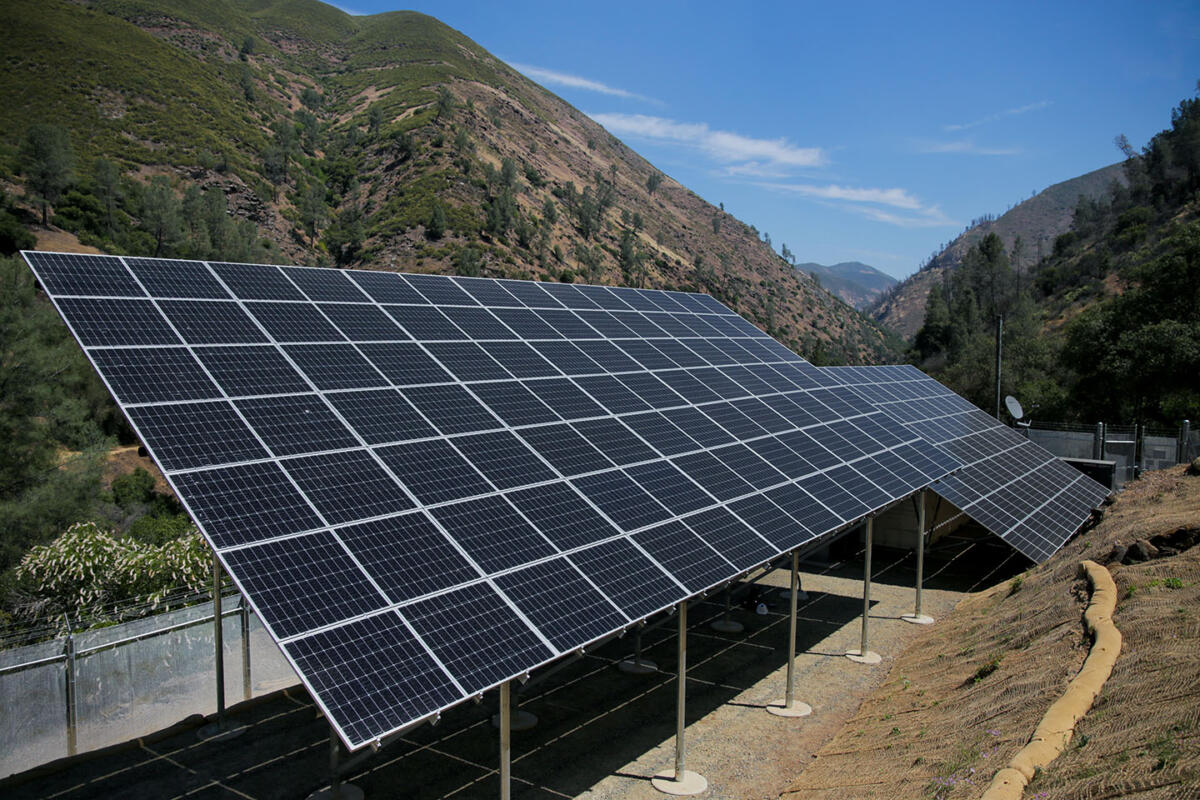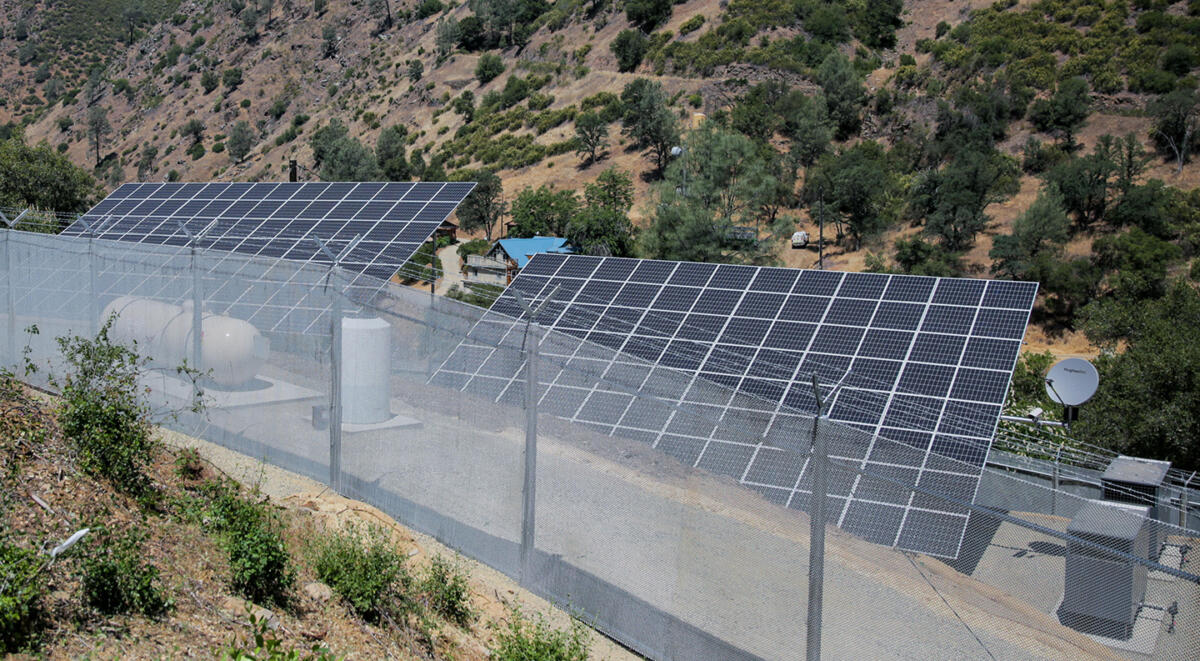Faced with the challenge of supplying electricity to rural areas that are either isolated or located in high wildfire-risk regions, some utilities are turning to remote microgrids to provide reliable power safely. These microgrids are standalone systems—not connected to the grid—powered by solar energy and battery storage, with fuel-powered generation serving as a backup power supply.

By using remote microgrids, a utility can reduce fire risk. The remote microgrid enables utilities to remove transmission and distribution lines entirely or shut them down during periods of high fire danger. Using standalone power — or power not connected to the grid — as the electricity source provides an alternative to Public Safety Power Shutoffs (PSPS), a widespread California program first implemented in 2019. PSPS subjected millions of people to power outages, sometimes without advance warning. According to a state audit, 67 separate curtailments shut off power to over 3.6 million people between 2013 and 2021.
California utilities have over 26,000 miles (42,000 km) of high-voltage transmission lines, and many of them traverse rugged, sparsely populated mountainous terrain. There are also 40,000 miles of bare — or uninsulated—power lines that cross high fire danger areas throughout the state. In these environments, power lines are costly to maintain. The power lines can quickly spark wildfires when the wind blows trees against the wires or transformers explode during summer heat waves.
Increasingly hotter, dryer conditions resulting from California’s changing climate heighten the fire risk. According to a November 2022 state report, California’s changing environment has led to an exponential increase in wildfires in the past few years. With the growing wildfire risk, utilities are considering removing rather than repairing electric grid infrastructure in the riskiest areas.
Using microgrids to help prevent catastrophic wildfires
After transmission or distribution lines were implicated in several catastrophic wildfires, California updated its high fire risk maps, while utilities took multiple steps to reduce fire risk. They launched the power shutoff program and worked to improve their shutoff warning systems, providing customers with at least a full day of warning whenever possible.
PG&E, a gas and electric ultility in California, also implemented its Remote Grid program, a new strategy to reduce wildfire danger. Remote grids are part of the plan to dismantle transmission infrastructure in risky High Fire Threat District (HFTD) areas and instead rely on small, standalone grids to provide power to remote communities.
BoxPower, a California company that got its start providing containerized microgrids for disaster relief, is working with PG&E to identify communities that are good candidates for the Remote Grid initiative and develop those projects.
While uniquely designed to fit the needs of each location, PG&E’s remote microgrids typically include a solar photovoltaic (PV) array, batteries and inverters. Often the system comprises a backup fuel source, such as a propane tank. The utility pays for installation and maintenance costs and bills customers at their usual rates for grid-connected power supply.

Update: Briceburg pilot project for remote grid fire mitigation
The tiny off-grid community of Briceburg, California, was the first implementation of PG&E’s remote grid concept. Consisting of three homes and a Bureau of Land Management Visitor’s Center, Briceburg is in Mariposa County, CA, near the Merced River and not far from Yosemite National Park. After the 5,500-acre Briceburg Fire destroyed the distribution feeder leading to the town, PG&E decided it would be more cost-effective to remove the power lines and build a standalone hybrid power system. In addition to mitigating fire risk, removing the power lines saves on maintenance and vegetation control expenses.
Modeled using UL Solutions HOMER Pro, the Briceburg hybrid power system has a 36-kilowatt solar PV array, an approximately 70-kW lithium iron phosphate battery bank and a backup generator that uses propane fuel. The system is controllable by PG&E or BoxPower via satellite.
“The Briceburg microgrid has operated successfully for nearly two years,” according to Anderson Barkow, BoxPower co-founder and chief financial offficer. “It has been a great test case, functioning well under weather extremes.”
The microgrid has run smoothly during historic winter storms in 2021 and record-breaking heat waves in 2022 and notably during the deluges caused by the atmospheric river storms in late 2022 and 2023. When PG&E shut off local power as the Oak Fire burned only miles from Briceburg in 2022, the microgrid proved its worth, continuing to deliver reliable power to the community. Additionally, the Briceburg system has provided clean power with reduced carbon emissions, functioning on renewable energy 99% of the time, resorting to its propane generators rarely during winter.
According to BoxPower, PG&E is one of the first utilities in the United States to offer Standalone Power Systems (SPS) or remote grids as alternatives to power lines in sparsely populated rural areas. PG&E announced four new remote-grid sites in August 2022, which will allow the removal of approximately five miles of overhead power lines. PG&E also plans to build thirty more remote grids (microgrids) by 2026 as part of its wildfire mitigation planning.

UL Solutions’ HOMER® Pro is the leading pre-feasibility design software for modeling microgrids, with more than 250,000 users in more than 190 countries. It provides engineering and financial analyses of remote, off-grid and grid-tied complex distributed energy systems, helping reduce financial risk for owners and developers. Learn more about HOMER Pro and download a complimentary trial.
